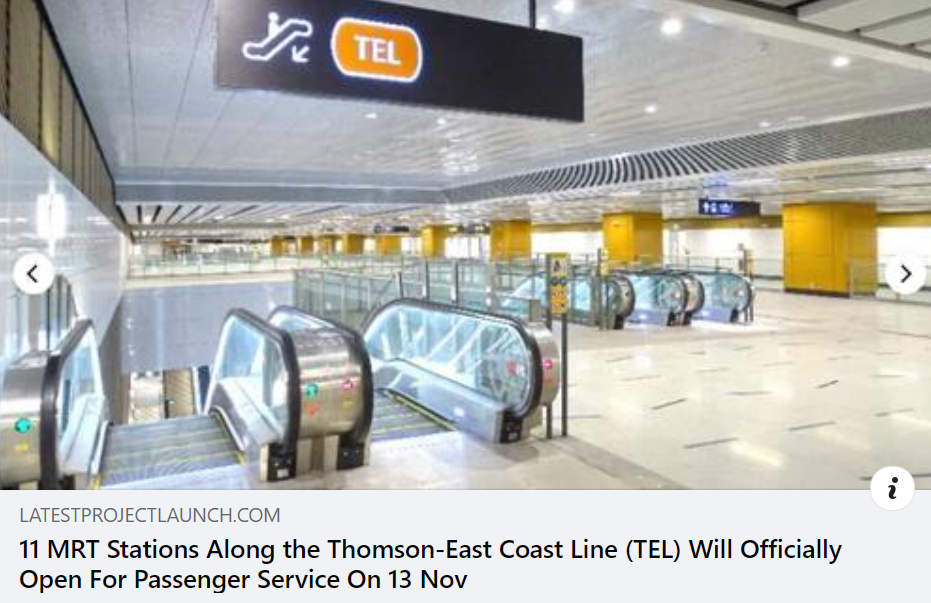Urban Redevelopment Authority just announced yesterday that from next year 18 Jan 2023, all flats and condominiums within the central area, as well as the residential component of commercial and mixed-use developments, will be required to provide a minimum of 20 per cent of dwelling units with a nett internal area of at least 70 square meter (sqm).
The URA wants to encourage developers to provide a more balanced mix of unit sizes to cater to the diverse needs of homebuyers, including large families as there has been “a persistent trend in declining dwelling unit sizes in the central area,” which is in conflict with its planning intent to position this area as an attractive place to live, work and play.
The central area covers 11 planning areas including Outram, Newton, River Valley, Singapore River, Marina South, Marina East, Rochor, Orchard and the Downtown Core. In its bid to encourage more live-in population in the central area, the URA need to ensure a good mix of dwelling unit sizes there to cater to different household sizes and segments.
The URA plans to influence the relevance and appeal of our city centre and central areas, presenting new opportunities to renew core central areas of activities and life. The way we live, work and play is changing and may no longer be confined to specific locations or time periods of the day. Singaporeans want more choices in shaping our own lifestyles and more families may be considering moving to the city central areas of Singapore.
We take a look at how the Master Plan is charting the future of Singapore’s Central Area. The vision is to continue to sustain the Central Area as a dynamic 24/7 city centre with diverse jobs and business opportunities, where homes are located close to work places and there is an abundance of lifestyle and recreational options. This is achieved through the following strategies:
1. Build up lively and inclusive live-in communities
More homes will be introduced in city locations such as Orchard, the Central Business District (CBD), Pearl’s Hill, Marina Bay and Marina South, offering residents with greater variety of city living options, with easy access to transport and employment nodes, lifestyle and recreational choices.
2. Celebrate areas of arts, culture and heritage
Cultural precincts at Fort Canning Park, Bras Basah.Bugis and the Civic District will be better connected and more walkable with wider sidewalks along Armenian, Coleman, and Waterloo Streets. These will also create spill out spaces for arts and cultural activities. A large part of Armenian Street will also be pedestrianised and turned into a park.
Our historic districts of Little India, Kampong Glam and Chinatown will retain their rich heritage and keep communities and visitors engaged through continued place making efforts in collaboration with local communities and businesses.
3. Enhance connectivity and encourage active mobility
Access into the Central Area and within will be faster and easier with upcoming train lines and cycling networks. Plans to transform Robinson Road into a Transit Priority Corridor12 are being explored to strengthen it as a key public transport and pedestrian corridor, with lanes repurposed for further bus priority, cycling and enhanced pedestrian environment.
4. Improve access to and the experience of parks and open spaces
Green linkages will be added to connect various green and open spaces between the Singapore Botanic Gardens, Fort Canning Park, Pearl’s Hill and to Tanjong Pagar and Marina Bay, for a more seamless experience. Green spaces within some of the attractions (such as the Fort Canning Park and Istana Park), will also be expanded and enhanced.
5. Rejuvenate distinctive areas to offer diverse uses and experiences
With evolving lifestyle needs and consumer demands, active efforts are made to rejuvenate key areas such as Orchard Road and the CBD, introducing more diverse uses and offerings, creating more multi-experiential precincts and enhancing their appeal and relevance as a whole.
In 2018, the URA cut the maximum number of units allowed in new private flat and condo developments outside the central area with the Government's move to reverse the trend of developers building more and more shoebox units in the heartlands of Singapore.
Under the 2018 rules, the maximum number of housing units allowed in a development outside the central area will be arrived at by dividing the proposed building gross floor area (GFA) by 85 sq m. The current formula divides GFA by 70 sq m. This means around 18 per cent fewer units will be allowed if developers maximise their quota.
Under the 2018 guidelines, it will be divided by 85sqm and 100sqm for a total of nine areas - Marine Parade, Joo Chiat-Mountbatten, Telok Kurau-Jalan Eunos, Balestier, Stevens-Chancery, Pasir Panjang, Kovan-How Sun, Shelford and Loyang. Previously, only four areas — Telok Kurau, Kovan, Joo Chiat and Jalan Eunos — are subject to stricter guidelines.
These guidelines have been effective in achieving a good mix of both smaller and larger units in new private housing developments outside the Central Area.
"The new guidelines favor families, as its likely to result in larger unit sizes with higher quantum price due to the larger floor area of the condo / apartment units. Future homeowners can look forward to larger livable space to enhance the quality of their living environment with the ultimate convenience offered by central area locations" said Kiwi Lim.










 RSS Feed
RSS Feed
